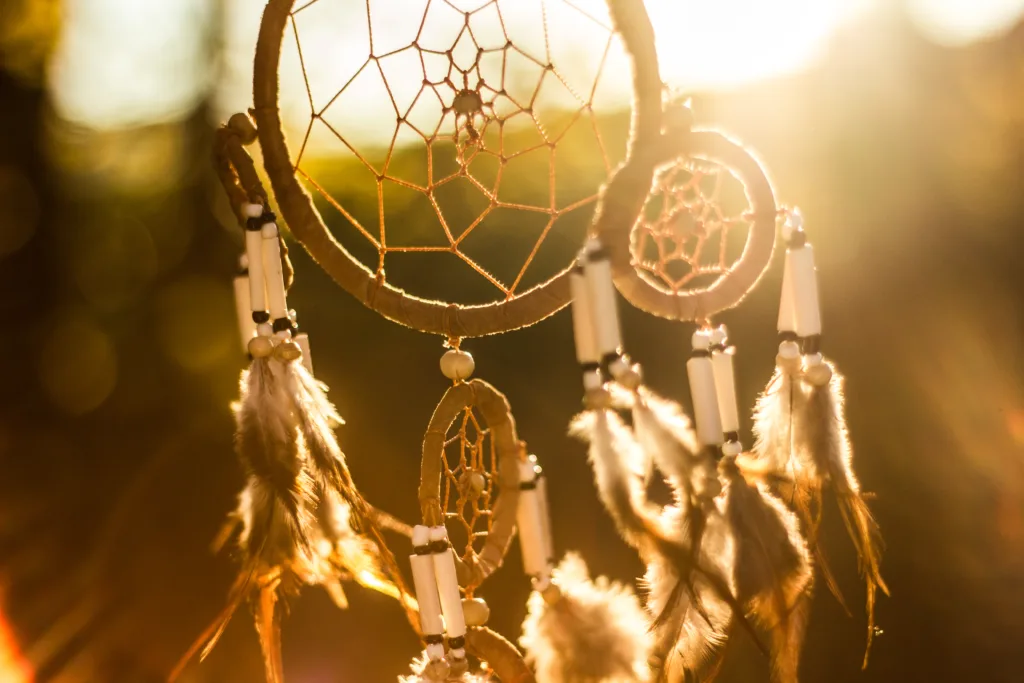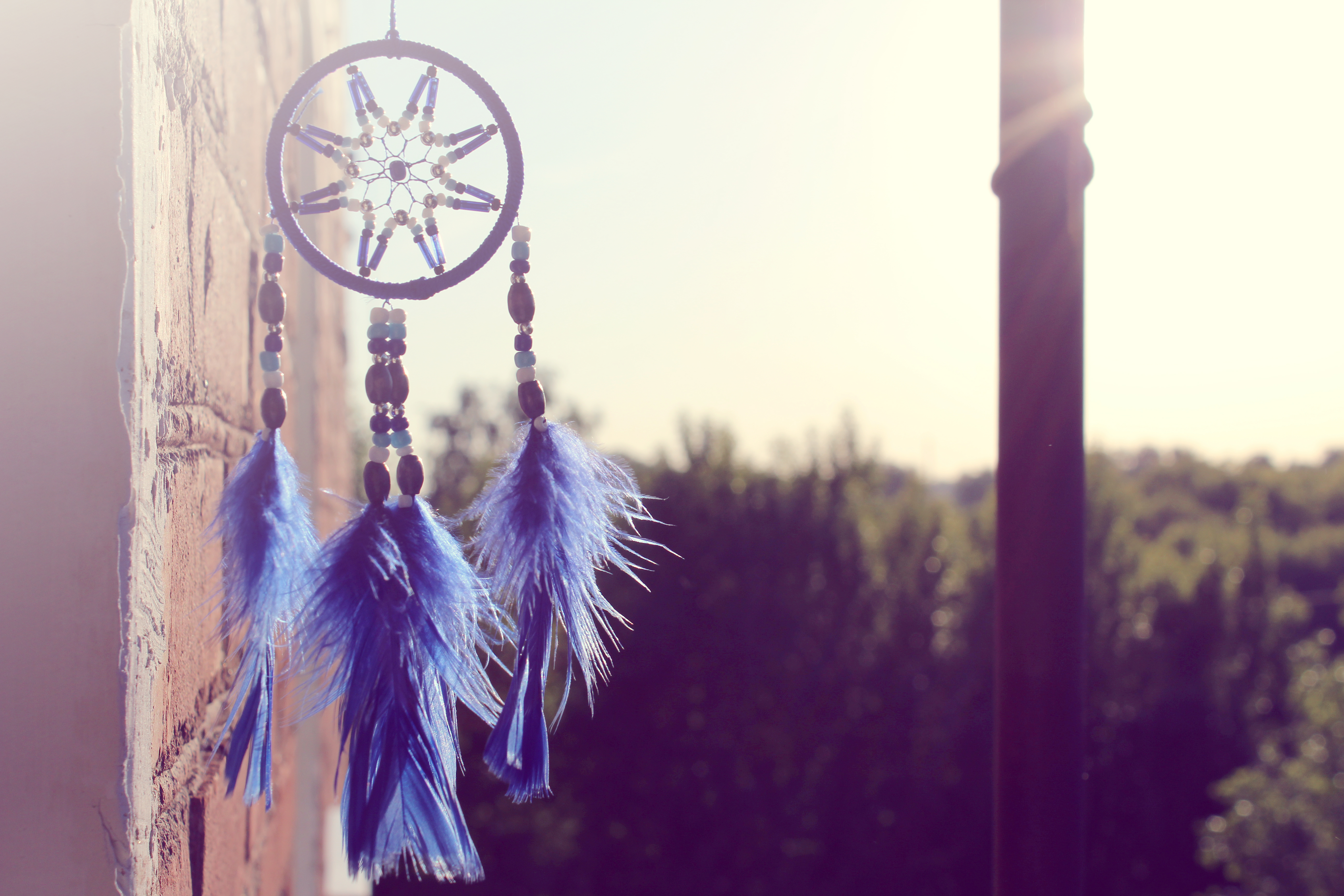Dreamcatchers are believed to be powerful objects that capture bad dreams and nightmares, allowing only good dreams to pass through. They are often used as decorative items in bedrooms or as gifts for loved ones. But the question remains, do dreamcatchers really work?
The origin of dreamcatchers can be traced back to Native American culture. They were traditionally made using materials found in nature, such as willow twigs, sinew, and feathers. The Ojibwe people believed that hanging a dreamcatcher above their bed would protect them from bad dreams and negative energy.
The concept of dreamcatchers working is based on the idea of intention and energy. It is believed that a dreamcatcher acts as a filter that captures negative energy and bad dreams, allowing positive energy and good dreams to pass through. The feathers and beads attached to the dreamcatcher are believed to create a calming atmosphere and promote relaxation, leading to a peaceful sleep.
Scientifically, it is not proven that dreamcatchers have any effect on dreams or sleep quality. However, the psychological benefits of having a dreamcatcher in your bedroom cannot be ignored. The presence of a dreamcatcher can help to create a sense of comfort and security, reducing anxiety and stress levels. This can lead to a better quality of sleep and overall wellbeing.
Dreamcatchers are also often used as a form of meditation or mindfulness. By focusing on the intricate details of the dreamcatcher, one can enter a state of relaxation and inner peace. This can be beneficial for thse who suffer from anxiety or have trouble falling asleep.
Dreamcatchers may not have any direct effect on dreams or sleep quality, but they can have a positive impact on our overall wellbeing. They act as a symbol of protection and comfort, creating a calming atmosphere in our bedrooms. Whether you believe in the spiritual aspect of dreamcatchers or not, there is no harm in incorporating them into your daily life as a reminder to stay mindful and peaceful.
The Impact of Dreamcatcher on Society
Dreamcatchers are generally considered to be good as they are believed to have positive effects on a person’s physical and mental well-being. Dreamcatchers are designed to capture bad dreams and negative energy, preventing it from entering your sleeping space. The beads and feathers used in the design of dreamcatchers represent positive energy and good luck. It is said that dreamcatchers promote restful sleep and peaceful dreams, leading to improved mental health and overal well-being. In many cultures, dreamcatchers are considered sacred and are used as protective talismans. Therefore, dreamcatchers are generally considered to be a positive addition to any space, promoting a sense of calmness and positivity.

The Effects of Sleeping with a Dream Catcher
Dreamcatchers are believed to have originated from Native American culture and have been used for centuries to capture bad dreams and allw good dreams to pass through. When you sleep with a dream catcher above your bed, it is believed to filter out any negative energy or bad dreams that may be trying to reach you while you sleep. The dream catcher acts as a protective shield, catching any negative energy in its web and preventing it from entering your subconscious mind. This can result in a more peaceful and restful sleep, allowing you to wake up feeling refreshed and rejuvenated. Additionally, some dreamcatchers are adorned with crystals or gemstones, like Agate, which can help to enhance the positive energy and promote a sense of calm and relaxation in your bedroom. sleeping with a dream catcher can help to create a more positive and harmonious environment in which to rest and recharge.
The Significance of Where a Dream Catcher is Hung
According to the principles of Feng Shui, it matters where you hang a dream catcher. The ideal location to hang a dream catcher is in a place where it can catch the positive energy and bring in positive thoughts. Feng Shui suggests that the dream catcher sould be hung in a balcony, courtyard, or window where it can allow positive energy and good vibes to flow in. This placement can help to protect you from negative thoughts and energy, promoting a peaceful and harmonious atmosphere. Therefore, it is important to consider the placement of the dream catcher to maximize its effectiveness and benefits.
Hanging Dream Catchers: Where to Place Them
Dream catchers are traditionally hung over or near the bed, as they are believed to catch negative dreams and allow positive ones to filter through. However, dream catchers can also be hung in other locations such as doors and windows, which are entry points for energies. Additionally, dream catchers can be placed on porches, balconies, or even in cars for protection. Ultimately, the placement of a dream catcher is a personal choice, and the important thing is to hang it in a location where it will bring positive energy and serve its intended purpose.
Which Colour Dream Catcher Is Most Appealing?
Dream catchers come in a variety of colors, and the best color for a dream catcher depends on the specific intention or purpose for which it is being used. Traditionally, dream catchers were made using natural materials such as twigs, feathers, and sinew, and were decorated with colors that held symbolic significance for the creator or recipient.
White dream catchers are popular beause they are believed to represent purity and clarity of thought, making them a good choice for those who want to balance their energies and have a peaceful sleep. They are also believed to ward off negative energy and promote positive energy flow, which can help to encourage pleasant dreams.
Red and pink dream catchers are often associated with passion and success, making them a good choice for those who want to manifest their desires and achieve their goals. These colors are believed to stimulate passion and creativity, and to promote a sense of confidence and determination.
However, when it comes to choosing a dream catcher for children, many parents opt for colorful designs that feature playful images and bright colors. These dream catchers are often designed to appeal to children’s imaginations and encourage positive, happy dreams.
Ultimately, the best color for a dream catcher depends on the individual’s personal preferences and intentions. It is important to choose a design and color that resonates with you and holds meaning for you, as this will help to enhance the dream catcher’s effectiveness in promoting peaceful, restful sleep and pleasant dreams.

Giving Someone Your Dream Catcher
You can give someone your dream catcher as a gift. Dream catchers are often given as gifts to friends and family members, and they are intended to prvide protection and promote good dreams. If you have made the dream catcher yourself, it can be a very special and personal gift, with the added meaning of your time and effort spent on creating it. It is important to note, however, that dream catchers are a sacred symbol in Native American culture and should be respected as such. If you are purchasing a dream catcher from a Native American craftsman, it is important to understand the cultural significance and to purchase from a reputable source. giving someone a dream catcher is a thoughtful and meaningful gift that can bring a sense of peace and protection to the recipient.
Conclusion
Dreamcatchers have been used for centuries as a symbol of protection and positivity. While there is no scientific evidence to support the idea that dreamcatchers work, many people believe that they provide a sense of calmness and tranquillity when placed in a bedroom. The use of Agate beads and slices in the decoration of dreamcatchers has been known to enhance their positive energy and create a secure environment. Ultimately, whether dreamcatchers work or not is up to personal belief, but they can serve as a reminder to focus on positive energy and promote a sense of well-being in your daily life.
